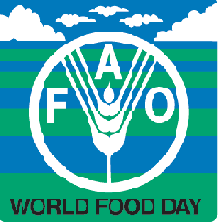Elected politicians and bureaucrats are important pillars of governance. In India and in many other countries, politicians have very limited powers over the bureaucrats, at least in theory. For example, a politician in India does not have any control over the recruitment of IAS officers. He can’t change their wages, can’t dismiss them nor demote them. In some sense, this is desirable, to avoid the politicization of policy implementation. But then the question arises: how would a politician facing electoral pressures ensure that his pet projects are being implemented by the bureaucrats over whom he doesn’t have any control. Of course, a politician can offer the bureaucrat, non-monetary incentives or can pick somebody who shares his world view.
I just came across a very interesting research paper by Laxmi Iyer and Anandi Mani, (‘Traveling Agents: Political Change and Bureaucratic Turnover in India’, November 2009), which explores the phenomenon of the power of politicians to transfer the bureaucrats to retain control over them.
Transfer of bureaucrats by politicians is not something unheard of, at least in India. Some of our Chief Ministers are actually famous for their tendency to transfer bureaucrats. This has prompted demands to put explicit limits on the politicians’ ability to transfer bureaucrats before they complete, say, at least two years of service in that position.
The authors build a theoretical model, based on some realistic assumptions in the Indian context. A noteworthy feature of the paper is that the predictions of the model are empirically verified by using a very unique dataset on the career histories of 2800 IAS officers between 1980 and 2004, combined with data on political changes in major Indian states over the same period, proxy measures for bureaucrats’ ability, and a measure of the relative importance of different posts as viewed by the bureaucrats themselves. I won’t go into details about the data. But it’s worth reading to see the efforts taken by the authors to collect such unique data.
What are their findings?
First, they find that IAS officers are indeed transferred quite frequently. Over the period of 1980-2000, the probability that an officer gets transferred is 53%. The average tenure of the IAS officers is merely 16 months.
Secondly, consistent with the hypothesis that the politicians use transfers as a control mechanism, they find that the average rate of bureaucrat transfers increases significantly, by 10% over the baseline of 53%, when there is a new Chief Minister. Most of these transfers take place in the first four months after a new CM takes over. Further, a CM who comes to power along with a new party in power, is twice as likely to transfer bureaucrats than a CM who comes to power without a change in the party in power. The majority of such transfers are what authors call ‘lateral’ transfers, i.e. not accompanied by promotion. Thus, these transfers are not for a reward for past performance or routine promotions that merely coincide with a new CM coming into the office.
The bureaucrats with a higher ability invest more in developing expertise, they undergo longer durations of training over the course of their entire career. These officers are also significantly more likely to be recommended for senior positions in the central government (‘empaneled’). But there is another way of obtaining important positions- by being ‘loyal’ to specific politicians. The authors find that the officers are more likely to be appointed to important positions when they belong to the same caste as the CM’s party base.
Disturbingly, the average importance of the posts held by an officer over the course of his or her career does not vary significantly with his ability– the officers with high ability are no more likely to be assigned to important posts than other (say, loyal) officers.
May be it’s time to pressurize the political establishment to pass the ‘Public Services Bill’, which stipulates that the bureaucrats can’t be transferred before completion of at least two years in that position. No wonder, only eleven states in India have agreed, while ten states have refused outright!



